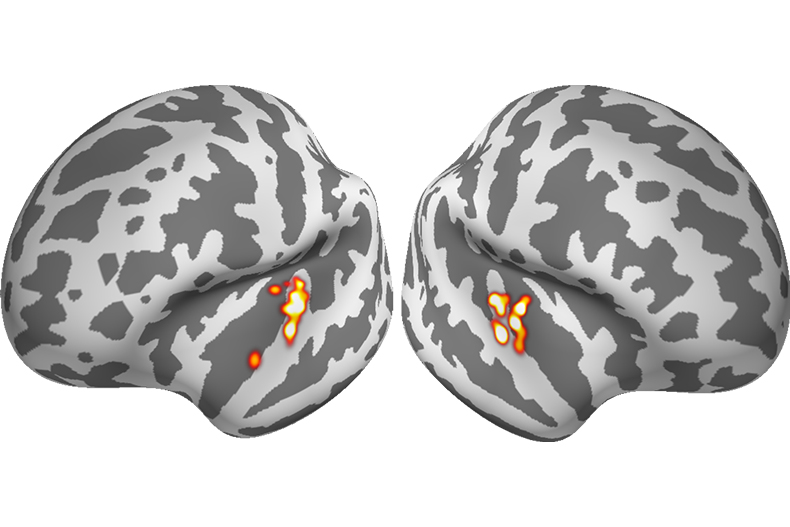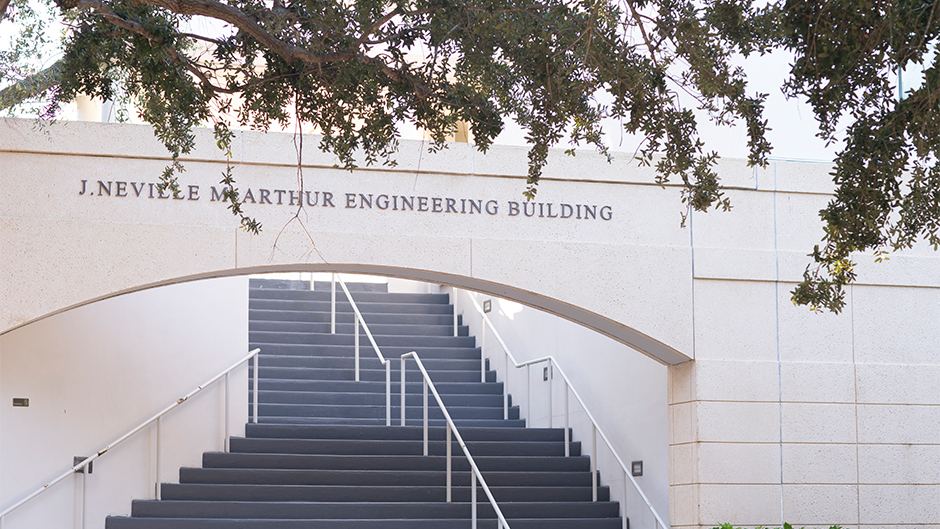The National Institutes of Health (NIH) and the French Fondation Pour l'Audition have awarded Andrew Dykstra, College of Engineering Assistant Professor of Neural, Cognitive, and Brain Engineering, two separate research grants to explore how humans process and perceive sound.

Andrew Dykstra, College of Engineering Assistant Professor of Neural, Cognitive, and Brain Engineering
The NIH award is a 2-year, $400,000 grant funded through the National Institute on Deafness and Other Communication Disorders. This funding will allow Dykstra, assisted by members of his lab, to do new research into the relationships between certain neurotransmitters in auditory cortex–the part of the brain that responds to sound–and real-world measures of hearing dysfunction.
Past experiments in lab animals have established that the loss of cortical inhibition due to age or hearing loss sometimes makes it difficult to distinguish certain sounds while ignoring others.
For instance, even individuals who have a normal audiogram or hearing test sometimes struggle to hear an individual talking in a noisy space like a crowded restaurant. It is known that as people get older, it becomes more difficult to filter out the sound of the one person they want to hear from the background noise.
“Younger folks have a relatively easy time focusing on the person they want to focus on and suppressing everything else,” Dykstra says. “But when you get into middle age, like I am, this becomes more and more challenging for many people.”
Dykstra’s research will, for the first time in humans, measure the levels of inhibitory neurotransmitters in the auditory cortex to see if it is possible to predict whether a person would struggle to hear in noisy settings.
Co-investigator Mohammed Goryawala, an assistant scientist at the University of Miami’s Miller School of Medicine in the Department of Radiology, will offer his expertise in using magnetic resonance spectroscopy to measure levels of inhibitory neurotransmitters, while Dykstra will focus on how such levels affect auditory perception and how the brain responds to sound.

Gathering this new knowledge may one day lead to real-world solutions for people who find themselves straining to hear in a crowded noisy space, possibly leading “toward smarter and better hearing aids and hearing prosthetics like cochlear implants,” Dykstra says, noting that the research may eventually be useful in developing therapeutic drugs.
The second 1-year seed grant funded through the Fondation Pour l’Audition will bring Dykstra together with Lyon-based researcher James Bonaiuto. Bonaiuto’s lab at the Institut des Sciences Cognitives Marc Jeannerod in Lyon includes magnetoencephalography equipment that will allow the researchers to gather data on the magnetic fields generated outside the brain when the brain is active.
This super sensitive technology, which relies on super-conducting sensors, will gather information on the precise area in the brain that can be linked to auditory perception. Again, this research has only been done previously in animals, but, thanks to the technology and creative thinking, it is now possible to gather information on humans, which Dykstra called a “big fundamental step.”
To help gather the data, the investigators will use magnetic resonance imaging (MRI) to print a 3D foam head caste for each research subject. This mold will fix the person’s head in place so the magnetoencephalography may capture precise measurements to accurately map the spatial relationships in the brain.
“James [Bonaiuto] has already established this is feasible in other areas of neuroscience,” Dykstra says, adding that the method will be useful to answering questions “about the neural basis of auditory perception, which hasn’t been done before.”
Dykstra, who will be working with College of Engineering grad student Carolina Fernandez on this research, is familiar with international collaborations having worked in Germany during his post-doc years.
“I’d say with James in particular, it was a sort of natural connection,” Dykstra says. “He has these methods and I come with these particular questions that could benefit from these methods so it’s a very natural kind of interaction.”
Both the NIH and the Fondation Pour l’Audition grants are basic research grants, Dykstra says, that will enable data collection to apply for larger grants in the future.

